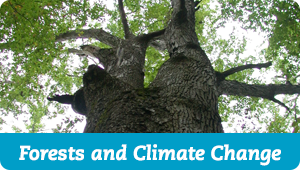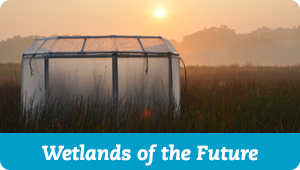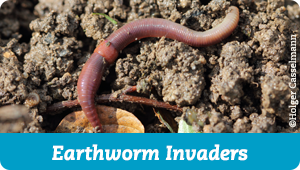There is more CO2 in the atmosphere today than there has been for 3 million years. Back then, during the middle of the Pliocene Epoch, CO2 levels reached an estimated 415 parts per million. It was a warmer, wetter world, where forests could grow in the Arctic where tundra grows now.
To a certain extent, Earth’s climate has always changed. The difference today is that it is changing faster than ever before. And humanity wields enormous power to influence the planet’s future—so much that some scholars have taken to calling this age the Anthropocene, or the Epoch of Man.
The science is simple: Carbon dioxide (CO2) traps sunlight. Normally, when sunlight hits the Earth’s surface, a fair amount of it bounces back into space. But carbon dioxide and other greenhouse gases absorb infrared light, keeping it trapped in the lower atmosphere. There it simmers, warming the planet below.
Much of the CO2 in the atmosphere today got there from human activities. Before the Industrial Revolution, CO2 concentrations were roughly 280 parts per million. Now they have passed 410 parts per million. Worldwide, the decade from 2010 to 2019 was the hottest decade on record since thermometer-based measurements began.
If we continue on our current course, global average temperatures will likely rise another 1.5°C (2.7°F), and could even pass 4°C (7.2°F) by the end of the century, according to the Intergovernmental Panel on Climate Change. But not all places would feel the strain equally. In the U.S., the state of Alaska has warmed twice as fast on average as the rest of the country. Meanwhile, as more intense hurricanes are likely to pummel the east coast, states in the southwest are expected to suffer harsher droughts.
The videos here explore climate change from the angle of two critical ecosystems: our forests and our wetlands. Forests are among the world’s most valuable carbon sinks, absorbing and locking down CO2 in their wood and leaves. Soils store even more carbon than plants, and ecologists suspect they might have an unexpected ally—earthworms. Wetlands protect the coasts from hurricanes, floods and other extreme weather that may accelerate over the next century. But sea level rise threatens their survival.
Smithsonian ecologists discovered that, by itself, CO2 spurs most plants to grow better. But as climate change advances, they will have to contend with droughts, higher temperatures and rising waters. None of these changes are expected to work in their favor. While these ecosystems offer us some protection for now, the question remains: for how long?




